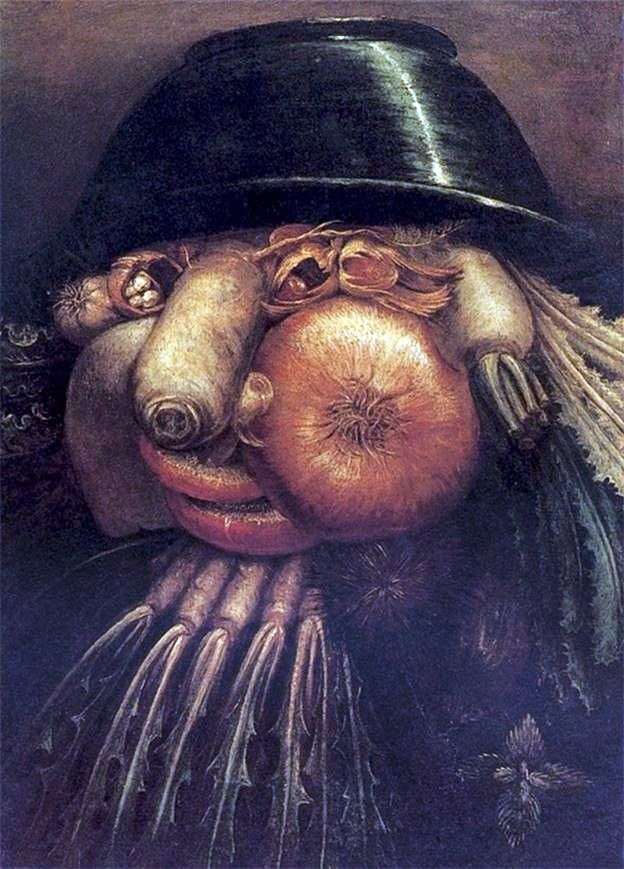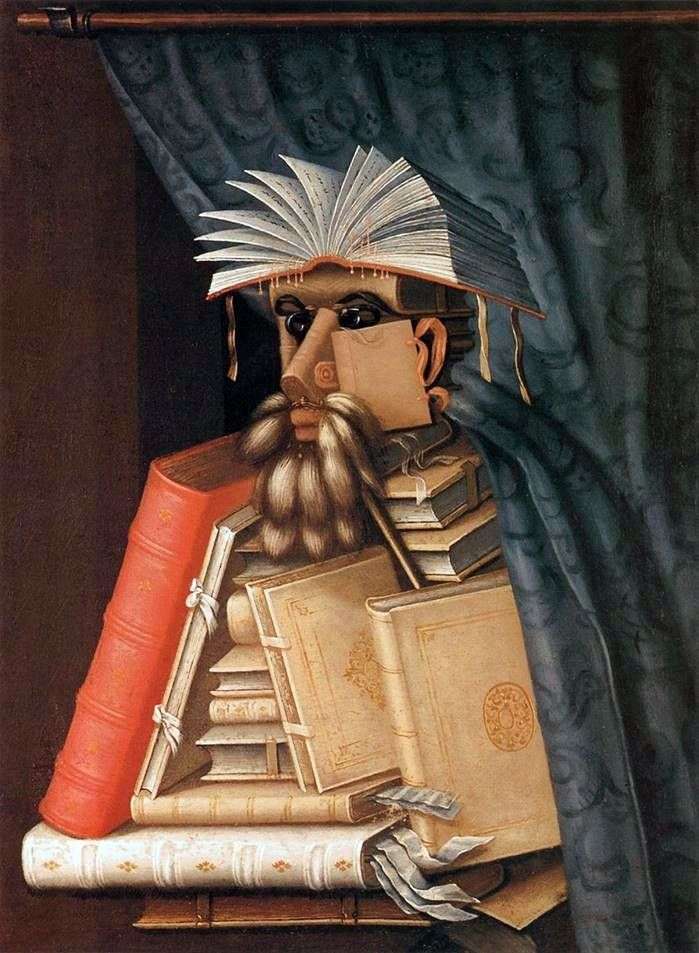
Still life “Gardener” refers to a series of so-called reversible paintings, in which the principle of anamorphosis is used. The phenomenon of anamorphosis consists in rearranging the elements and using the laws of linear perspective in order to create a new image.
Another starting point for the creation of such paintings could become culinary art: before us came descriptions of startling banquets, at which the dishes were whole compositions created by real artists.
 Cook by Giuseppe Arcimboldo
Cook by Giuseppe Arcimboldo Flora by Giuseppe Arcimboldo
Flora by Giuseppe Arcimboldo Jardinier – Giuseppe Arcimboldo
Jardinier – Giuseppe Arcimboldo Autumn by Giuseppe Arcimboldo
Autumn by Giuseppe Arcimboldo Librarian by Giuseppe Arcimboldo
Librarian by Giuseppe Arcimboldo Portrait of Emperor Rudolf II by Giuseppe Arcimboldi
Portrait of Emperor Rudolf II by Giuseppe Arcimboldi Spring by Giuseppe Arcimboldo
Spring by Giuseppe Arcimboldo Summer by Giuseppe Arcimboldo
Summer by Giuseppe Arcimboldo